Last updated: September 13, 2023
Article
Visualizing Injustice: Mendez, et al. v. Westminster School District of Orange County, et al. | Justice Art by Incarcerated Youth

Student artists: Andrew K., Kaylee F., Jose C., Abraham V., Stacy Lynn R., and Juan G. Teachers: Ruth Rosen and Sam Lightbody.
In the California Court of Appeals, Fourth District, Santa Ana, California, a painting brings the landmark court case Mendez, et al. v. Westminster, et al. to life. In 1944, Sylvia Mendez was an 8-year-old girl living in Westminster, Orange County, California, when her family tried to register her and her siblings at the Seventeenth Street School.
In the center of the painting, a silver chain-link fence sweeps across the canvas, separating the scene in two. One side features a red brick school, Westminster, and its white students playing in a well-equipped playground. The other side illustrates Hoover Elementary and its chipping gray walls and students sitting on the dirt. A golden lock labeled “Segregation” binds a silver chain together. Within the painting, the Mendez family looks out to the viewer. Here, Gonzalo and Felicitas Mendez and their children, Sylvia, Gonzalo Jr., and Jerome behind the iron fence.
With a sign that says “No Mexicans Allowed,” the mural at the Santa Ana Fourth District Court of Appeals illustrates a localized history of school segregation, Mexican American families’ fight against exclusionary policies, and an unprecedented and landmark win for segregated students of color across California.
How the Mural Came to Be
Justice Eileen Moore originally organized an art contest for the California Court of Appeals, Fourth District, but was not successful. Thus, the mural was born out of a partnership between the California Court of Appeals, Fourth District and the Orange County Department of Education. Together they created a program that empowers students to create art based on issues tackled within the Orange County courts throughout the years.
The Mendez, et al. v. Westminster, et al. mural was painted by students of the Orange County Department of Education’s Alternative, Community, and Correctional Schools and Services (ACCESS) program at the Otto A. Fischer School. The school serves incarcerated youth within the Orange County Juvenile Hall. The six Juvenile Hall artists, Andrew K., Kaylee F., Jose C., Abraham V., Stacylynn R. and Juan G., created the 8-foot-by-6-foot mural in 2009. It was unveiled as the centerpiece of the courthouse.
The following sections will analyze the mural artists’ visualization of injustices within the Mendez, et al. v. Westminster, et al. story.
Visualizing Injustice: Sites and Symbols of School Segregation
Visual culture looks at images and representations to understand an aspect of culture. Now, we will look closely at the Mendez, et al. v. Westminster, et al. mural to understand the injustices of school segregation. Let’s zoom in! Try sliding your mouse over to get a closer look.
Conditions of the School Buildings
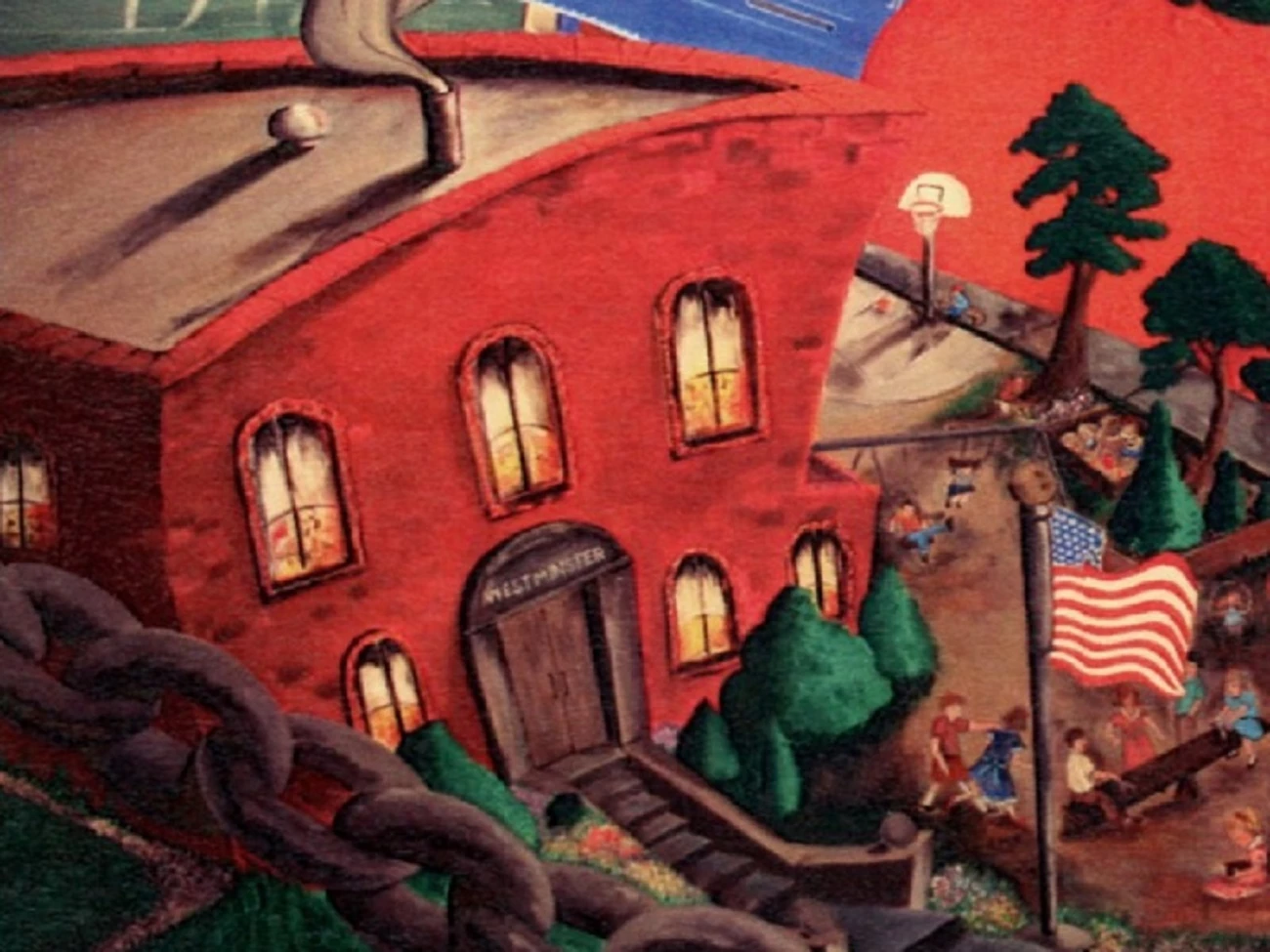
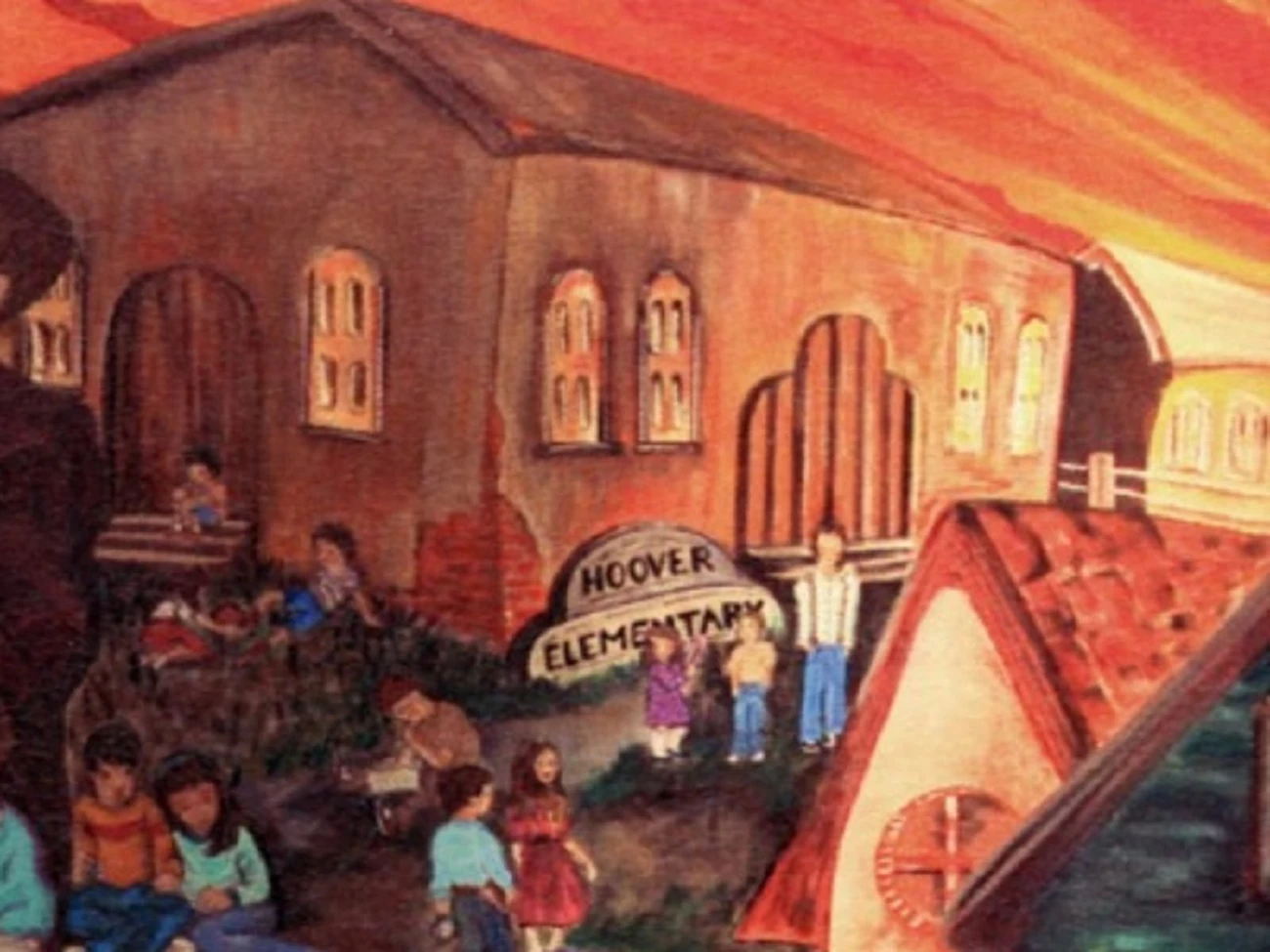
Left image
Detail of Mendez v. Westminster painting, Seventeenth Street School.
Credit: Student artists: Andrew K., Kaylee F., Jose C., Abraham V., Stacy Lynn R., and Juan G. Teachers: Ruth Rosen and Sam Lightbody.
Right image
Detail of Mendez v. Westminster painting, Hoover Elementary School.
Credit: Student artists: Andrew K., Kaylee F., Jose C., Abraham V., Stacy Lynn R., and Juan G. Teachers: Ruth Rosen and Sam Lightbody.
The mural artists depicted the two segregated schools in 1946 Hoover Elementary (for students of Mexican descent) and Westminster Elementary (for white students) drew the line for eligibility on the notion of race. Not only were the schools segregated, but the conditions of each institution were also unequal. Take a look at the depictions of the two schools. What are the conditions of the buildings and students?
One side features the red-brick school, Westminster Elementary. Here, the United States flag is erected at the foot of the school’s steps, and the landscape is lush with shrubs, flowers, and trees. In the playground, students climb the jungle-gym, kick off by the swing sets, and gather by the teeter-totter. The mural artists’ paint Westminster Elementary as what Sylvia Mendez recollects as a “beautiful school.”
The other image features Hoover Elementary, marked as the Mexican school. The artists illustrate the school building with chipping paint, a loose foundation, boarded walls, and a dirt ground. The students sit at the school’s stoop or on the dirt ground aimlessly. Through this imagery, the viewer sees Hoover Elementary as a decrepit building not fit for students.
Comparing these two images, the differences between the conditions of the two schools are stark: from the building conditions, the resources available, and the happiness of the children. What are some other symbols you see that depict the condition of the segregated schools and students?
What is in Reach
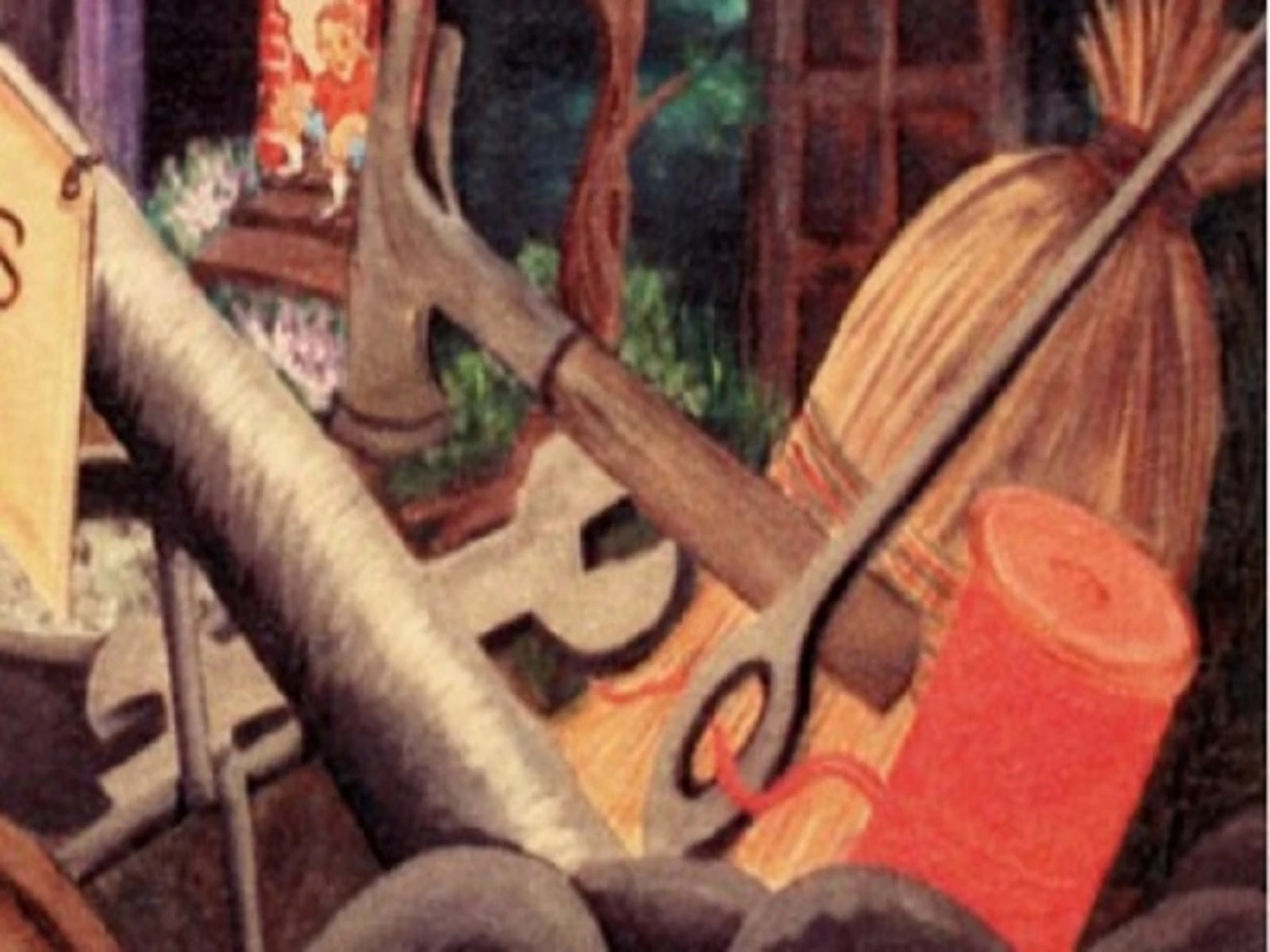
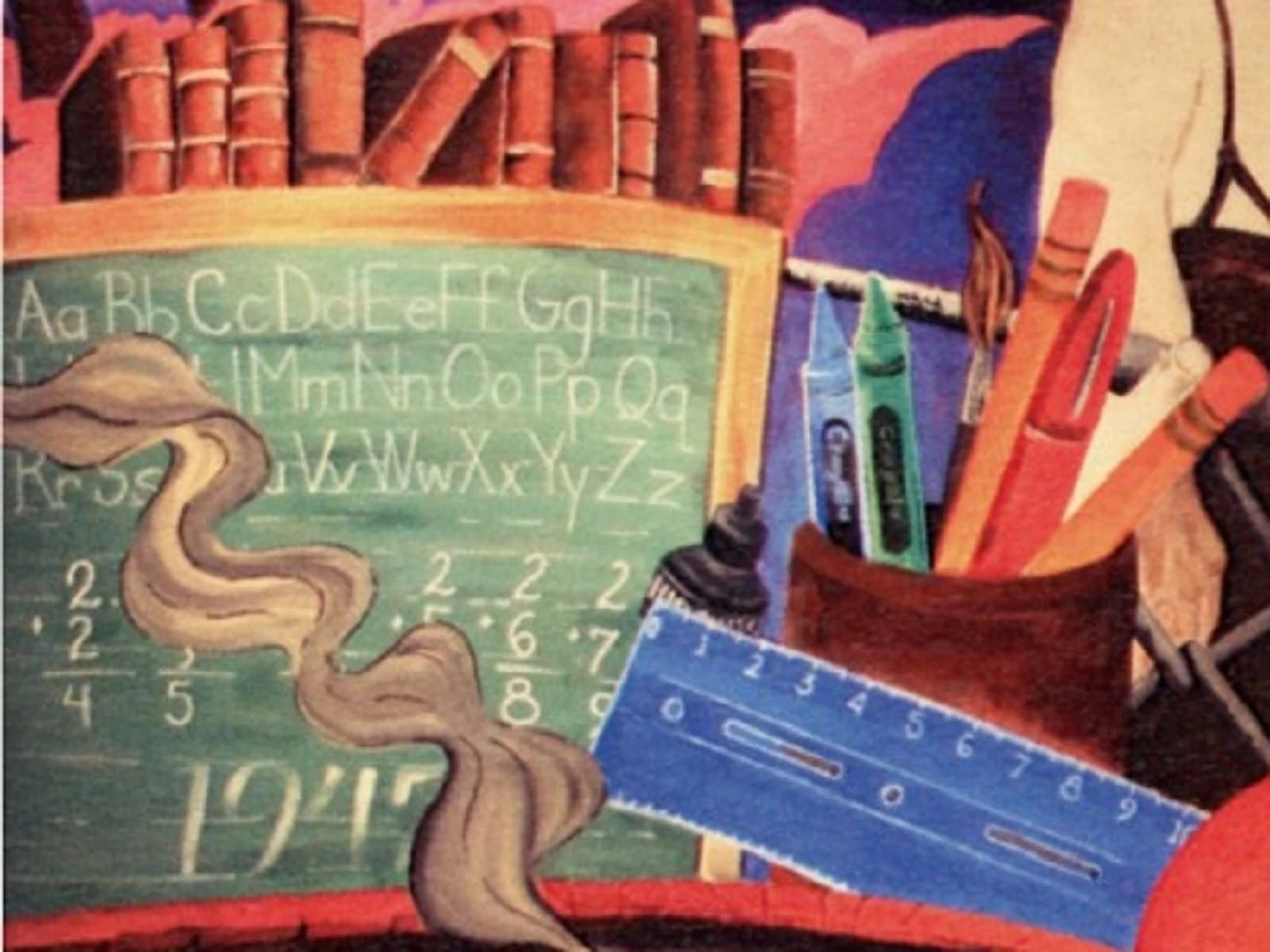
Left image
Detail of Mendez v. Westminster painting, items above Seventeenth Street School.
Credit: Student artists: Andrew K., Kaylee F., Jose C., Abraham V., Stacy Lynn R., and Juan G. Teachers: Ruth Rosen and Sam Lightbody.
Right image
Detail of Mendez v. Westminster painting, items above Hoover Elementary School.
Credit: Student artists: Andrew K., Kaylee F., Jose C., Abraham V., Stacy Lynn R., and Juan G. Teachers: Ruth Rosen and Sam Lightbody.
In the above images, the artists conveyed symbols of segregated education among the two schools.
The mural artists illustrated a stack of books, a blackboard, a jar of writing utensils, and a ruler above the Westminster school building. While Gonzalo Mendez’s hand is in the frame, he is separated from these resources by the fence. On the other side, a soapy bucket, broom, hammer, wrench, and needle and thread are clustered on the side with the Mendez family;
What are the artists conveying about the resources and opportunities open to both sides of the fence?
According to Sylvia Mendez’s recollection of her education in Hoover Elementary, the segregated school was designed to Americanize the students. In Hoover, students weren’t taught how to read or write, and speaking Spanish was prohibited. Rather, the students were trained in gendered labor: boys were trained for industrial and agricultural labor, and girls were taught home economics and housekeeping.
Separation and Restriction
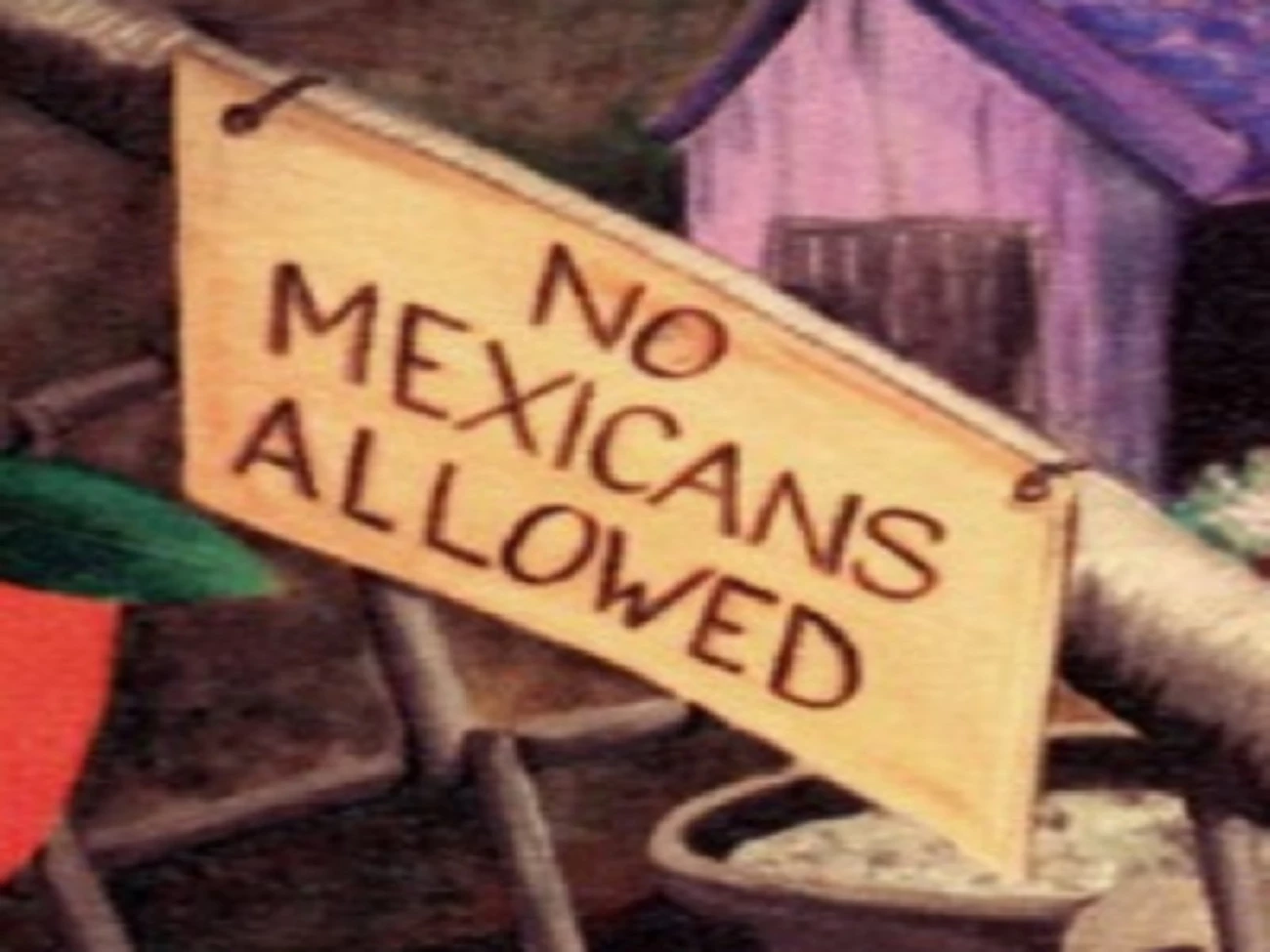
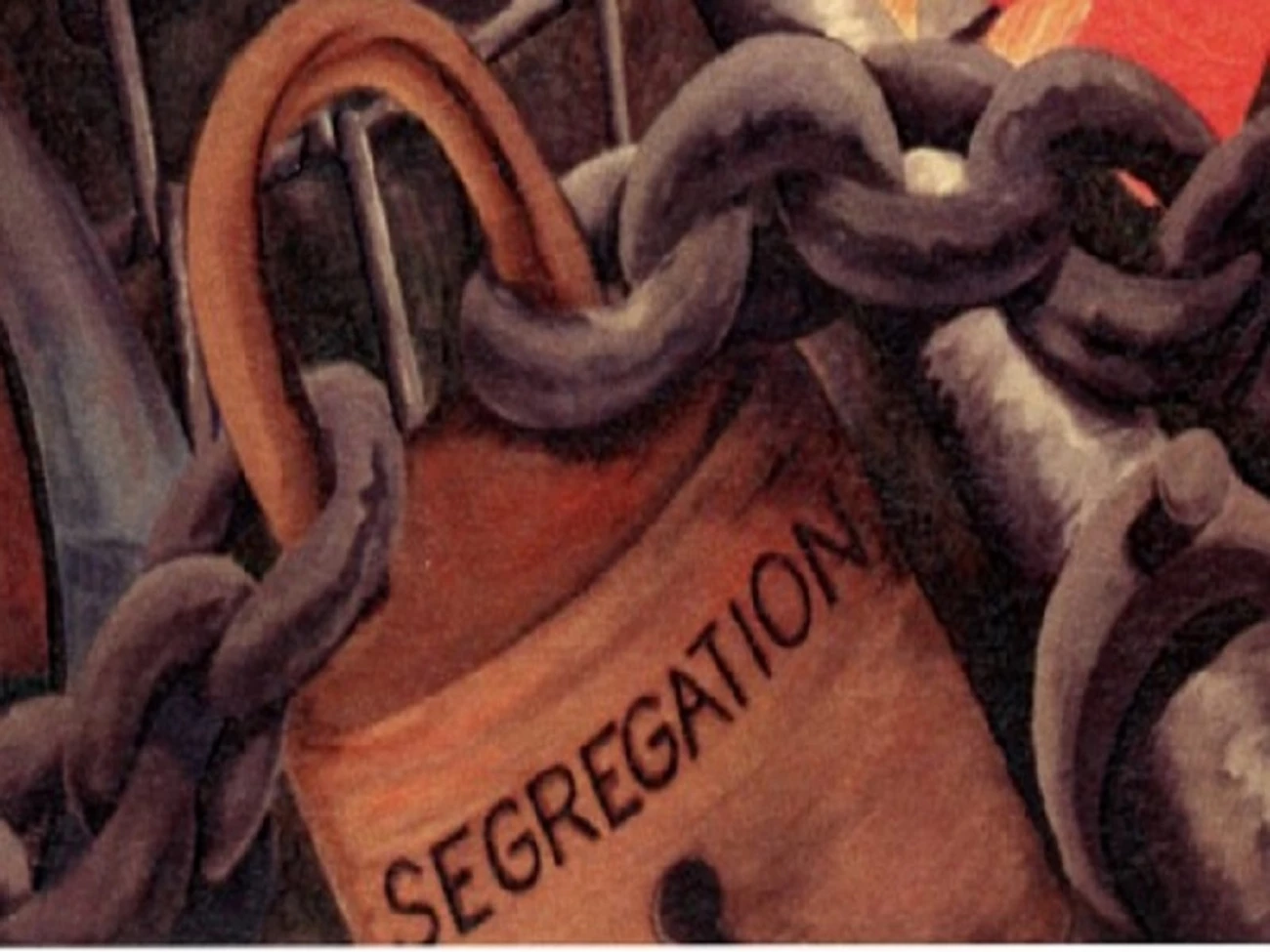
Left image
Detail of Mendez v. Westminster painting, “No Mexicans Allowed” sign.
Credit: Student artists: Andrew K., Kaylee F., Jose C., Abraham V., Stacy Lynn R., and Juan G. Teachers: Ruth Rosen and Sam Lightbody.
Right image
Detail of Mendez v. Westminster painting, “Segregation” lock.
Credit: Student artists: Andrew K., Kaylee F., Jose C., Abraham V., Stacy Lynn R., and Juan G. Teachers: Ruth Rosen and Sam Lightbody.
To visualize school segregation, the mural artists’ illustrated items of separation and restriction. Take a closer look at some of the elements they included.
One image depicts a fence with a sign illustrated with “No Mexicans Allowed” and the other features a golden lock titled “Segregation” tying the silver chains of the segregated schools.
Here, the fence and the sign explicitly places a divide between the Mendez family from the Westminster school. The sign “No Mexicans Allowed” is rooted during the era of racial segregation. The inclusion of this sign contextualizes the harm of segregation between white schools and “Mexican schools.” While there is a lock of segregation holding the silver chains together, the artists’ chose to depict cracking in one of the top most chainlinks. Here, the fight for school desegregation in Orange County seems to be loosening up the hold of segregation.
Conclusion: Art for Justice
Visual culture offers an analytical view into how the mural artists’ embed meaning in their imagery, symbolism, and aesthetic choices within the Mendez, et al. v. Westminster, et al. painting. The artists were able to translate elements of the story such as Sylvia Mendez collections, archival materials, and the legislative fight into an engaging and momentous work. The artists’ experiences as incarcerated youth add to their understanding of the story and an awareness that the fight for justice is not just within the walls of Hoover Elementary or Westminster Elementary. Rather, the work encompasses the injustices as the result of racial segregation as a whole. The Mendez family and Westminster are only elements in a larger fight for justice and equity among students and youth all over the country.
This article was researched and written by Marjorie Justine Antonio, NCPE Intern and ACE CRDIP Intern, Cultural Resources Office of Interpretation and Education.
Dierking, Eleanor. “History on the Walls: The Santa Ana Courthouse Murals.” California Supreme Court Historical Society Newsletter (Fall/Winter 2017): 15-18. https://www.cschs.org/wp-content/uploads/2015/01/2017-Newsletter-Fall-History-on-Walls.pdf.
Hanigan, Ian. “The Story of Mendez v. Westminster.” The Deeper Learning Podcast, February 27, 2017. Podcast, website, 35:16. https://deeperlearning.ocde.us/ep-01-mendez-v-westminster/.
Mickadeit, Frank. “Jailed Artists Create Works for the New Courthouse.” Orange County Register. Last updated September 13, 2021, 2:16 PM. https://www.ocregister.com/2009/10/14/jailed-artists-create-works-for-the-new-courthouse/.
Shin, Esther. “Celebrating Fiesta Mendez: California’s Gold ‘Manzanar’ Episode Screening and Discussion.” Chapman University Library blog. October 16, 2017. https://blogs.chapman.edu/library/2017/10/16/celebrating-fiesta-mendez/.
Staggs, Brooke. “Festival Marks 70th Anniversary of Orange County Case That Helped Desegregate Schools.” Orange County Register. October 14, 2017. https://www.ocregister.com/2017/10/14/festival-marks-70th-anniversary-of-orange-county-case-that-helped-desegregate-schools/.
Tags
- entangled inequalities
- latino
- latino history
- latino heritage
- american latino history
- american latino heritage
- mexican american
- mexican american history
- puerto rico
- puerto rican
- civil rights
- school desegregation
- education
- legal history
- arts culture and education
- visual arts
- public art
- westminster
- orange county
- los angeles
- california
